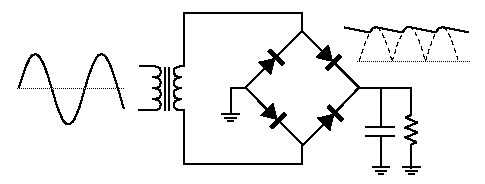- Tue Mar 26, 2013 4:05 am
#157449
I need to control a linear actuator (forward and backward) which takes 13A max at 24VDC.
Usually, when I need to do this, I use a battery to power a driver which directly power the linear actuator and everything works great.
The problem is that, in this case, I can't use a battery and I can only use AC power source (220VAC).
I tried to use a trasformer which takes in input 220VAC and give me an output of 24VAC - 10A with a rectifier in order to obtein a power source of 24VDC - 10A max for the driver; this system worked well for some days and then the rectifier failed. I think this happened because the driver is able to recover power from the motor inductance and send it back to the battery and this is dangerous if a transformer is used in place of the DC source.
I would like to ask you if there is a better solution to power and control my linear actuator by using an AC source without burning the rectifier.
Is it possible to use an H bridge, for example? I only need to control the actuator motion and I do not need to control also its speed or other parameters.
Usually, when I need to do this, I use a battery to power a driver which directly power the linear actuator and everything works great.
The problem is that, in this case, I can't use a battery and I can only use AC power source (220VAC).
I tried to use a trasformer which takes in input 220VAC and give me an output of 24VAC - 10A with a rectifier in order to obtein a power source of 24VDC - 10A max for the driver; this system worked well for some days and then the rectifier failed. I think this happened because the driver is able to recover power from the motor inductance and send it back to the battery and this is dangerous if a transformer is used in place of the DC source.
I would like to ask you if there is a better solution to power and control my linear actuator by using an AC source without burning the rectifier.
Is it possible to use an H bridge, for example? I only need to control the actuator motion and I do not need to control also its speed or other parameters.

